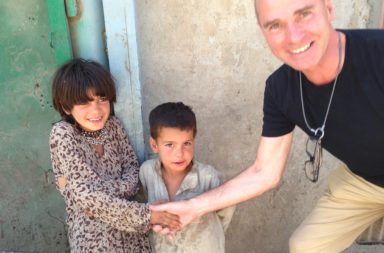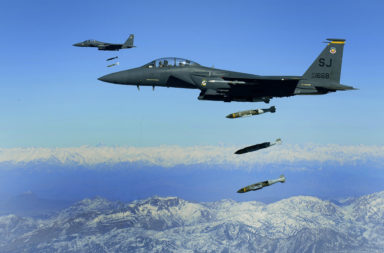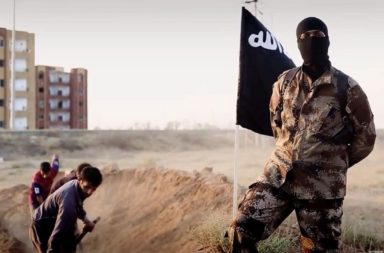Extremist elements have plagued the Pakistani nation for many years and have managed to embed themselves deep enough that they can now only be eradicated through large scale upheavals of policy and trends. To understand how to effectively fight extremism understanding the premises under which they initially came to be born and continue to aid its perpetuation is essential.t ´
To understand rising extremism in Pakistan it is imperative to understand that two factors are always at play; external factors such as the foreign policies of allies, enemies and the internal governance of Pakistan.
Together both in recent history have created- a formidable cauldron of sorts where extremism was allowed to fester. The 1979 soviet invasion of Afghanistan, a time when Pakistan’s ally USA supported the idea of jihad against the occupying soviet forces. These factions that were trained to oust occupying forces were never properly dealt with or reintegrated back into society post-soviet war, so while some tried to gain power in Afghanistan others were nurtured by Pakistan for help in the Kashmir conflict. A terrible mistake on their part. After 9/11 when the US forces launched an attack on Afghanistan there were many cross border attacks by militants who would use the porous border between Pakistan and Afghanistan to their advantage.
These militants were allowed to move freely to a certain extent as the Pakistan government only kept tabs on the militants that were a threat to their sovereignty, a grave mistake as these militants later switched allegiances. These two mistakes by the government of Pakistan resulted in the militants becoming deeply ingrained within the Pakistani society and gave them time to brainwash more recruits. Pakistan’s internal governance has a history of utilizing religion to garner votes. In 1977 general Zia-Ul-Haq came into power under Martial law. To disassociate himself with the original ruling party that consisted of Bhutto and his socialist policies he used Islam as a theme. He brought into effect Islamic Shariat laws such as the Hudood Ordinances and introduced severe punishments like amputating the hand of a robber.
In 1979 with the Afghan war Zia had the opportunity to legitimize his control over the country’s political regime through Islam. The concept of Jihad was used to help rile up potential recruits to fight in Afghanistan. Helping the Afghans fight against the soviets created legitimacy on the international forum helping Zia solidify his control while simultaneously setting the bedrock for the use of religion in political victories. State sponsored Madrassas were set up for schooling Mujahedeen and were run by organizations such as Jamaat I Islami, a pro-Islamic political party. These same Madrassas were later allowed a free reign which permitted extremism to flourish and the same organizations in later years gained political prominence even though they were sympathetic to the terrorists that harbored extremist values against both the government of Pakistan and the USA intervention in Afghanistan.
We have managed to see the effects of all the policies and actions taken by government officials at the top, but let us focus on the ground realities. FATA (Federally Administered Tribal Areas) is the hot spot of rising extremism or at least was before Pakistan army’s launch of a military operation.
This area was more susceptible to rising extremism not because of any fault of the locals but simply of circumstance. FATA has a porous border with Afghanistan allowing militants to easily come to into FATA from Afghanistan. With low levels of income, high illiteracy levels, little government regulation and a mostly ignored area that did not come into the media light it became an ideal spot for extremists. The low income levels and their little formal education helped extremists to manipulate the masses easily. One must keep these points in mind when thinking of how to fight extremism; and aim to fix the identified problems so that it is no longer conducive to extremism. The people that lose out because of this are the poor Muslims, the very same ones that these militants claim to be fighting for. Now combine this scenario with the drone program.
According to a UK based human rights organization “Reprieve” the US has managed to kill 1147 civilians including women and children in an attempt to kill 41 militant leaders. These so called targeted and specific strikes had to be repeatedly undertaken sometimes to get a singular terrorist. So essentially what the US government is saying is that the death of 28 civilians per militant leader death is justified. Even if the US government manages to sell this to the public in some convoluted manner citing these actions as necessary for the greater good and perhaps the only option, you would be hard pressed not to see the obvious fall backs of such actions which have an extremely high casualty rate.
Anti-US sentiment was already high in most tribal areas of Pakistan as they are seen as the aggressors in Afghanistan, but when you launch drone strikes with such a high ratio of civilian casualty you are helping propagate US hate. Essentially you are providing the militants exactly what they need to gather more recruits. When innocent people lose their children, their parents and friends that had nothing to do with extremism it is bound to spew hatred. This is horrific as these same tribal had they been approached in a better manner they could be helping in intelligence operations, but why would they now knowing that the intelligence they provide may result in the death of their own loved ones. So essentially drone strikes help ensure civilians are less willing to help out in intelligence gathering, it also helps militants capitalize on that hate and get more recruits, the very same recruits that may later go on to become leaders hence establishing a vicious cycle where the poor civilians of the tribal areas will always get the short end of the stick.
The above discussion reveals a pattern whereby the politically influenced motives of the external stakeholder’s leads to localized destruction. We saw this with the US and Pakistani alliance that funded, trained, and created the mujahedeen and were later unable to, or uninterested in, reintegrating them back in the society or necessary checks on them, until they became a force that they could no longer keep checks on. Similarly , the drone strikes, ironically touted to be in place to eliminate the militants ; in fact actively help in the creation of a whole new generation of militants. The vicious cycle continues.
Pivotal events such as the a massive and heinous attack at an Army public school that left more than 140 children dead along with an attack on Karachi’s airport and even the beheading of 23 soldiers from the frontier corps helped solidify the nation’s resolve against terrorism.
Operation Zarb-E-Azb was launched by the military in FATA in 2014 and so far according to the ISPR (Inter Services Public Relations) the military has destroyed 837 militant hideouts in North Waziristan, recovered and destroyed 253 tons of explosives, captured 18,087 weapons, conducted 9,000 intelligence-based operations and killed 2,763 militants, at the cost of losing 347 officers and soldiers (Express Tribune, June 15).
The operation is seemingly successful as the total number of fatalities in FATA were 2,863 during the year 2014, while the fatalities from the first three months of 2015 were 411.
Pakistan no longer differentiates good vs bad Taliban but rather all terrorist fall under the same umbrella and are being targeted. The national action plan was launched in January 2015 which stated that actions will be taken against literature, newspapers and magazines that are spreading hate, [ideas of] beheading people, sectarianism, extremism and intolerance. A special anti-terrorism force will be created. Action is will be taken to stop religious extremism, to protect religious minorities and the registration and regulation of seminaries (madrassas) is being planned.
The analysis of the history of extremism in Pakistan reveals ways to tackle the same. In particular, it brings to light the flawed internal policy making and external factors that need to be dealt with to ensure that the end of extremism.
Let’s start with the Afghan war, had Pakistan’s allies and Pakistan had helped reintegrate the mujahedeen back into society they would be less likely to utilize their power elsewhere. From this we can easily conclude that once Pakistan’s military operation in FATA ends, the military should not just exit, rather safety measures should be set up to ensure that a resurgence should not occur. Also there should be a higher focus on getting militants to surrender by giving them incentives of lower degrees of punishment rather than outright killing them as that will help send a message to militant leadership and help weaken them. When the lower ranks are just killed in combat many more rise up in thirst for revenge; just another tool for leaders to control the lower ranks. Currently after new policies in regard to education, Literacy rate for girls’ stands at 10.5 per cent in comparison to 36.66 per cent.
There should be an even greater and consistent focus on education while a simultaneous crack down on unregulated Madrassas to ensure that the residents of those areas are more literate and hence less susceptible to easy manipulation by propaganda of extremists.
The most vital external factor that needs to be dealt with is that of the drone strikes. If the extreme emotional distress and physical damage it does is not enough to warrant the stopping of the drone strikes then the vicious cycle it perpetuates and its very limited but an extremely high cost effect it has on the war on terror should be enough to stop this monstrosity. By ensuring these actions are taken, Pakistan truly has a fighting chance to get rid of extremism and all the woes that come along with.




